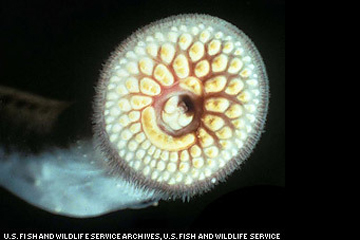How a Tiny Robot Could Check Your Health from Inside Your Body

Several research groups are looking into creating microscopic robots that cruise people's bloodstreams, looking for signs of illness. In this vein, one U.S.-U.K. research team wants to make a tiny, in-body monitoring robot modeled after the parasitic fish the sea lamprey, complete with sensors derived from living cells, according to the Engineering and Physical Sciences Research Council in the U.K., one of the funders of the research. The United States' National Science Foundation is the other funding group.
The robot would use some electronics, but its light and smell sensors would come from mammal cells, so it could respond to light and chemicals the way living animals do. It would power its artificial muscles with glucose, the basic form of sugar the human body uses for energy. And its electronic nervous system, swimming and sensing abilities would be patterned after sea lampreys, which are primitive fish native to the Atlantic Ocean. Researchers hope to make a first prototype that's less than a centimeter in length.
Sea lampreys are best known for invading the Great Lakes in the U.S. and threatening fish stocks there, but these robotocists want to use the lampreys as a model because they sense their environment well. "Nothing matches a living creature's natural ability to see and smell its environment and therefore to collect data on what's going on around it," chemical engineer Daniel Frankel said. Frankel is based in Newcastle University in the U.K. and is lead scientist for the robotic lamprey project, called Cyberplasm.
Frankel's team is now developing the lamprey's individual components. "We believe Cyberplasm could start being used in real-world situations within five years," Frankel said.
This story was provided by InnovationNewsDaily, a sister site LiveScience. Follow InnovationNewsDaily on Twitter @News_Innovation, or on Facebook.
Get the world’s most fascinating discoveries delivered straight to your inbox.



